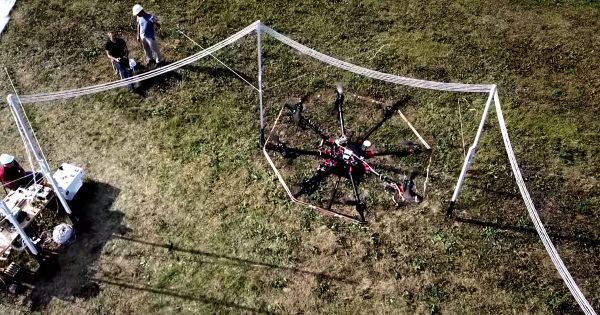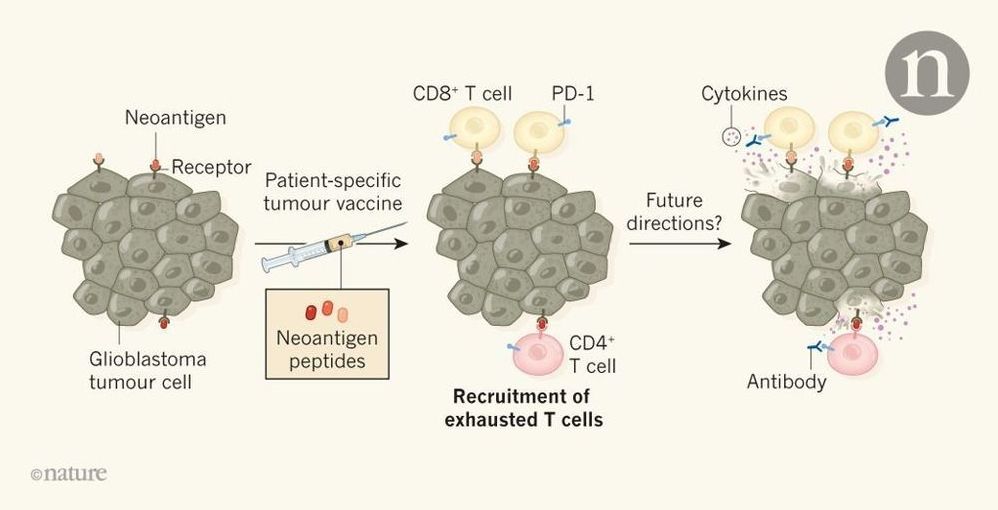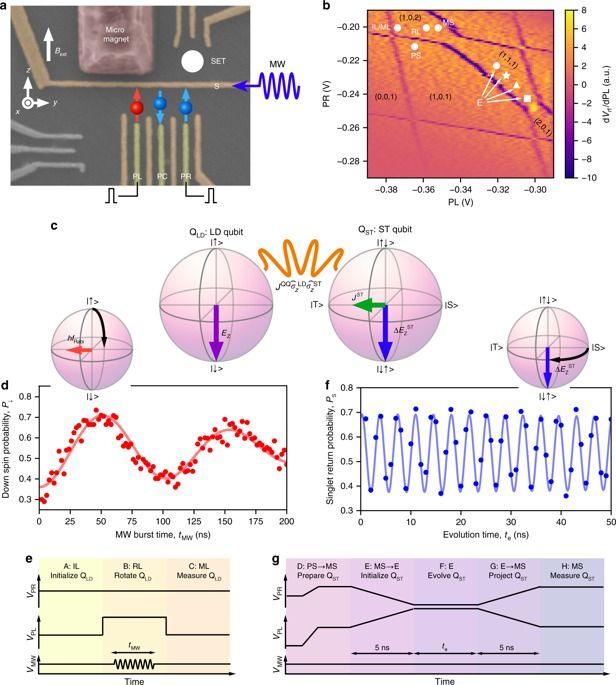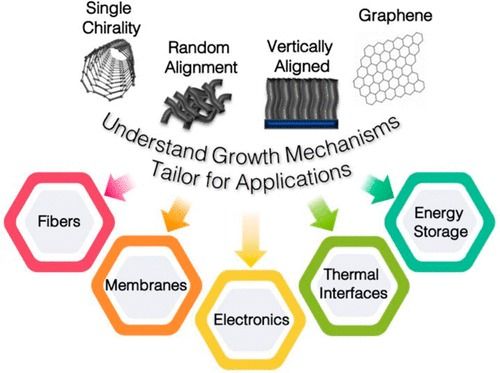Page 9169
Jan 7, 2019
Intraoperative detection of blood vessels with an imaging needle during neurosurgery in humans
Posted by James Christian Smith in categories: biotech/medical, neuroscience
Intracranial hemorrhage can be a devastating complication associated with needle biopsies of the brain. Hemorrhage can occur to vessels located adjacent to the biopsy needle as tissue is aspirated into the needle and removed. No intraoperative technology exists to reliably identify blood vessels that are at risk of damage. To address this problem, we developed an “imaging needle” that can visualize nearby blood vessels in real time. The imaging needle contains a miniaturized optical coherence tomography probe that allows differentiation of blood flow and tissue. In 11 patients, we were able to intraoperatively detect blood vessels (diameter, 500 μm) with a sensitivity of 91.2% and a specificity of 97.7%. This is the first reported use of an optical coherence tomography needle probe in human brain in vivo. These results suggest that imaging needles may serve as a valuable tool in a range of neurosurgical needle interventions.
Stereotactic brain biopsies are a minimally invasive procedure used to obtain samples of intracranial tissue for diagnostic purposes, most commonly related to brain tumors. Approximately 80,000 new cases of primary brain tumor are diagnosed, and 14,000 brain biopsies are performed each year in the United States (1, 2). Hemorrhage is the most frequent and devastating complication associated with this procedure. Perioperative hemorrhage is associated with rates of transient and permanent morbidity of 1.7 to 8.5% and 1.4 to 4.8%, respectively, and mortality rates of 0.6 to 2.8% (3–7).
The standard clinical practice is to identify blood vessels at risk of injury on preoperative imaging, using either contrast-enhanced magnetic resonance imaging (MRI) or x-ray computed tomography. Frameless stereotactic navigation techniques, guided by preoperative imaging, are then used to direct the biopsy needle trajectory to sample the target lesion, while avoiding vasculature or eloquent brain tissue (8).
Jan 7, 2019
Researchers discover new drug cocktail that increases human beta cell proliferation at rapid rates
Posted by James Christian Smith in category: biotech/medical
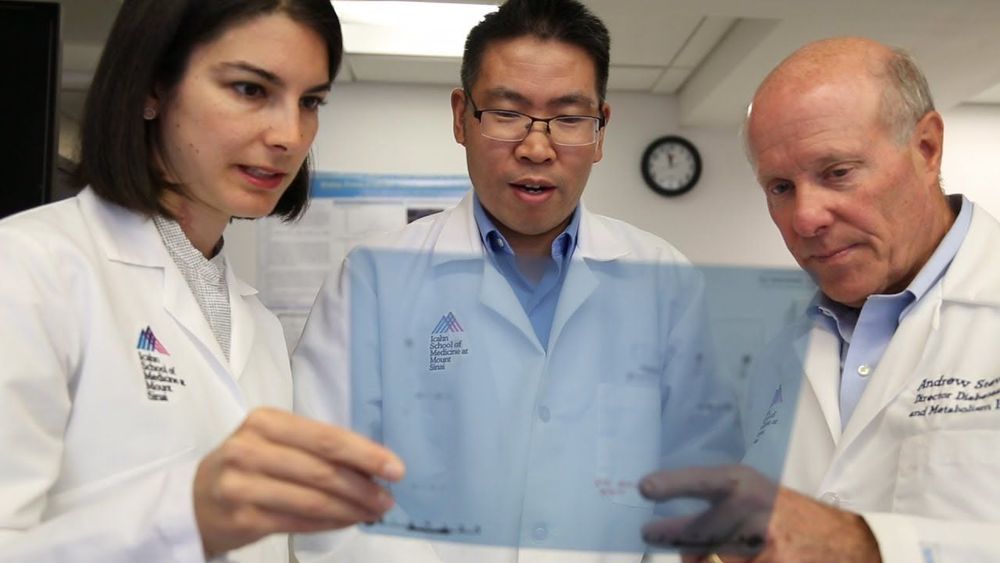
#EndOfDiabetes
Researchers at the Icahn School of Medicine at Mount Sinai have discovered a novel combination of two classes of drugs that induces the highest rate of proliferation ever observed in adult human beta cells—the cells in the pancreas that produce insulin. The result is an important step toward a diabetes treatment that restores the body’s ability to produce insulin.
Jan 7, 2019
Immune cells track hard-to-target brain tumours
Posted by James Christian Smith in categories: biotech/medical, neuroscience
Two Nature papers show that it is possible to make T cells that target some of the few neoantigens expressed by glioblastomas and that T- cell responses can be boosted in cancers. This News & Views discusses the findings.
Clinical trials reveal that personalized vaccines can boost immune-cell responses to brain tumours that don’t usually respond to immunotherapy. The findings also point to how to improve such treatments. Personalized vaccines boost immune responses targeting brain tumours.
Jan 7, 2019
A fast quantum interface between different spin qubit encodings
Posted by James Christian Smith in categories: computing, mathematics, quantum physics
“Open Article” smile Spin-based quantum computers have the potential to tackle difficult mathematical problems that cannot be solved using ordinary computers, but many problems remain in making these machines scalable. Now, an international group of researchers led by the RIKEN Center for Emergent Matter Science have crafted a new architecture for quantum computing. By constructing a hybrid device made from two different types of qubit—the fundamental computing element of quantum computers –they have created a device that can be quickly initialized and read out, and that simultaneously maintains high control fidelity.
Single-spin qubits in semiconductor quantum dots hold promise for universal quantum computation with demonstrations of a high single-qubit gate fidelity above 99.9% and two-qubit gates in conjunction with a long coherence time. However, initialization and readout of a qubit is orders of magnitude slower than control, which is detrimental for implementing measurement-based protocols such as error-correcting codes. In contrast, a singlet-triplet qubit, encoded in a two-spin subspace, has the virtue of fast readout with high fidelity. Here, we present a hybrid system which benefits from the different advantages of these two distinct spin-qubit implementations. A quantum interface between the two codes is realized by electrically tunable inter-qubit exchange coupling. We demonstrate a controlled-phase gate that acts within 5.5 ns, much faster than the measured dephasing time of 211 ns. The presented hybrid architecture will be useful to settle remaining key problems with building scalable spin-based quantum computers.
Jan 7, 2019
Qubits Communications
Posted by James Christian Smith in categories: computing, quantum physics
Qubits or quantum bits are the fundamental building block for quantum information processes. Whereas conventional computers store and process data as a series of ‘1’s and ‘0’s, quantum computers use the properties of a quantum system, such as the polarization of a photon or the spin of an electron.
Read the latest Research articles in Qubits from Nature Communications.
Jan 7, 2019
Carbon Nanotubes and Related Nanomaterials: Critical Advances and Challenges for Synthesis toward Mainstream Commercial Applications
Posted by James Christian Smith in categories: materials, nanotechnology
Great Open Access article on Nanotechnology to ring in the new year. #Enjoy
Advances in the synthesis and scalable manufacturing of single-walled carbon nanotubes (SWCNTs) remain critical to realizing many important commercial applications. Here we review recent breakthroughs in the synthesis of SWCNTs and highlight key ongoing research areas and challenges. A few key applications that capitalize on the properties of SWCNTs are also reviewed with respect to the recent synthesis breakthroughs and ways in which synthesis science can enable advances in these applications. While the primary focus of this review is on the science framework of SWCNT growth, we draw connections to mechanisms underlying the synthesis of other 1D and 2D materials such as boron nitride nanotubes and graphene.
2D materials ; boron nitride nanotubes ; carbon nanotubes ; chirality control ; CVD ; graphene ; helicity ; synthesis ;
Jan 7, 2019
New Gene Therapy for Vision Loss Proven Safe in Humans
Posted by James Christian Smith in categories: biotech/medical, life extension
In a small and preliminary clinical trial, Johns Hopkins researchers and their collaborators have shown that an experimental gene therapy that uses viruses to introduce a therapeutic gene into the eye is safe and that it may be effective in preserving the vision of people with wet age-related macular degeneration (AMD). AMD is a leading cause of vision loss in the U.S., affecting an estimated 1.6 million Americans. The disease is marked by growth of abnormal blood vessels that leak fluid into the central portion of the retina called the macula, which we use for reading, driving and recognizing faces.
The study published on May 16 in The Lancet, reports an exciting new approach in which a virus, similar to the common cold, but altered in the lab so that it is unable to cause disease, is used as a carrier for a gene and is injected into the eye. The virus penetrates retinal cells and deposits a gene, which turns the cells into factories for productions of a therapeutic protein, called sFLT01.
The abnormal blood vessels that cause wet AMD grow because patients have increased production of vascular endothelial growth factor (VEGF) in their retinas. Current treatments require injections of proteins directly into the eye that bind and inactivate VEGF, reducing fluid in the macula and improving vision. However, the therapeutic proteins exit the eye over the course of a month, so patients with wet AMD usually need to return to the clinic for more injections every six to eight weeks in order to stave off vision loss. Eye specialists say the burden and discomfort of the regimen is responsible for many patients not getting injections as frequently as they need, causing vision loss.
Continue reading “New Gene Therapy for Vision Loss Proven Safe in Humans” »
Jan 7, 2019
“Bionic Mushrooms” Fuse Nanotech, Bacteria and Fungi
Posted by James Christian Smith in categories: 3D printing, biological, cyborgs, engineering, nanotechnology, transhumanism
(Hoboken, N.J. — Nov. 7, 2018) — In their latest feat of engineering, researchers at Stevens Institute of Technology have taken an ordinary white button mushroom from a grocery store and made it bionic, supercharging it with 3D-printed clusters of cyanobacteria that generate electricity and swirls of graphene nanoribbons that can collect the current.
The work, reported in the Nov. 7 issue of Nano Letters, may sound like something straight out of Alice in Wonderland, but the hybrids are part of a broader effort to better improve our understanding of cells biological machinery and how to use those intricate molecular gears and levers to fabricate new technologies and useful systems for defense, healthcare and the environment.
“In this case, our system – this bionic mushroom — produces electricity,” said Manu Mannoor, an assistant professor of mechanical engineering at Stevens. “By integrating cyanobacteria that can produce electricity, with nanoscale materials capable of collecting the current, we were able to better access the unique properties of both, augment them, and create an entirely new functional bionic system.”
Continue reading “‘Bionic Mushrooms’ Fuse Nanotech, Bacteria and Fungi” »
Jan 7, 2019
Innovative ‘Mega Library’ Gives Materials Engineers New Hope
Posted by James Christian Smith in categories: innovation, materials
An innovative tool for discovering new materials has shown promise for materials engineers. Throughout history, civilizations have been known by the tools they created and left behind. To create those tools, engineers in every era have had to access materials to accomplish their goals. In the modern era, this often led innovators to craft their own unique materials.
The research has been called a “game changer” in discovering new technologies and the materials to build those technologies.
